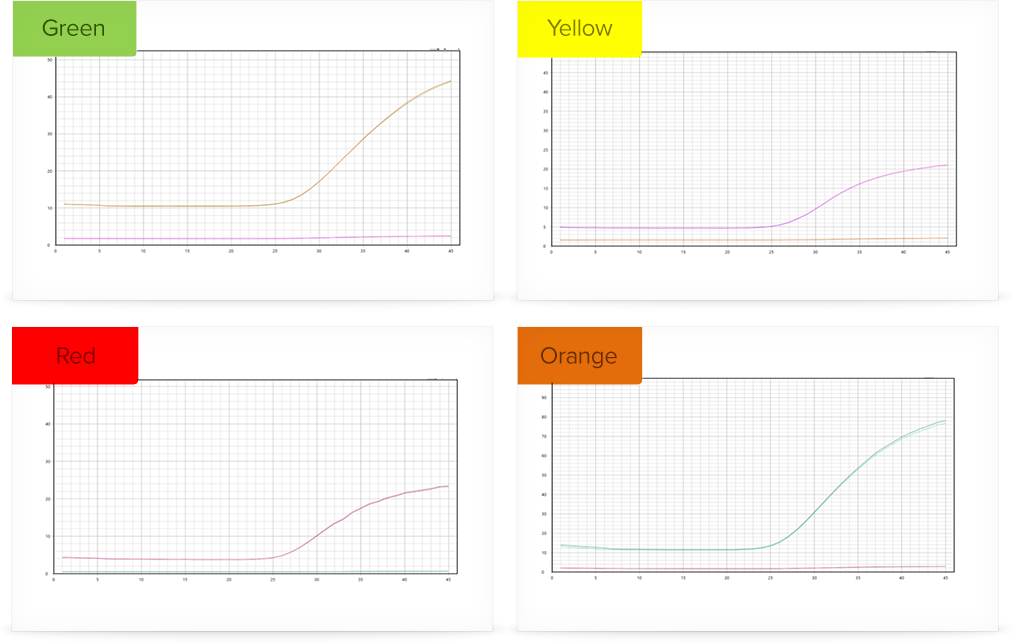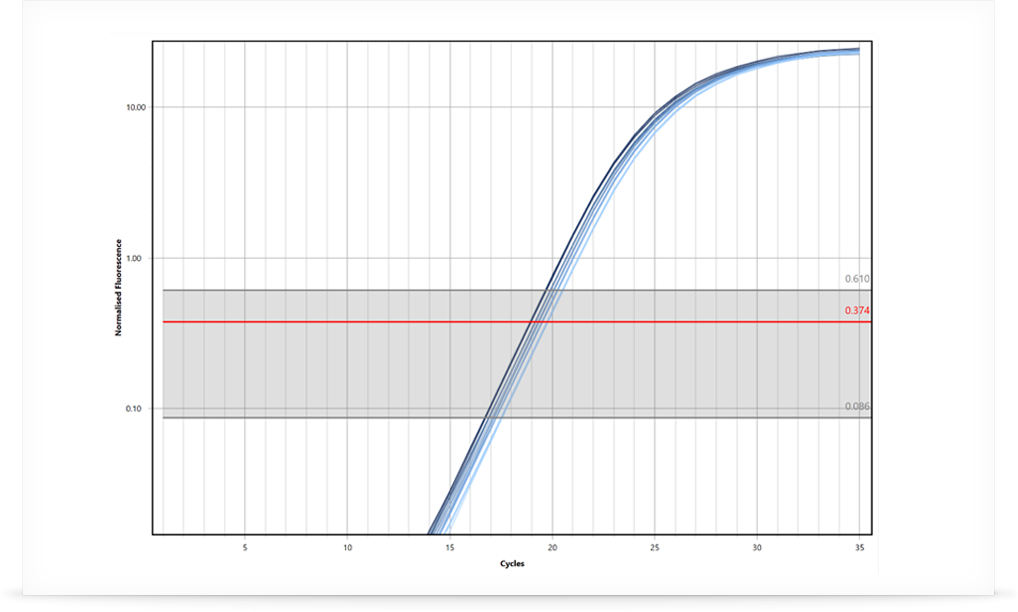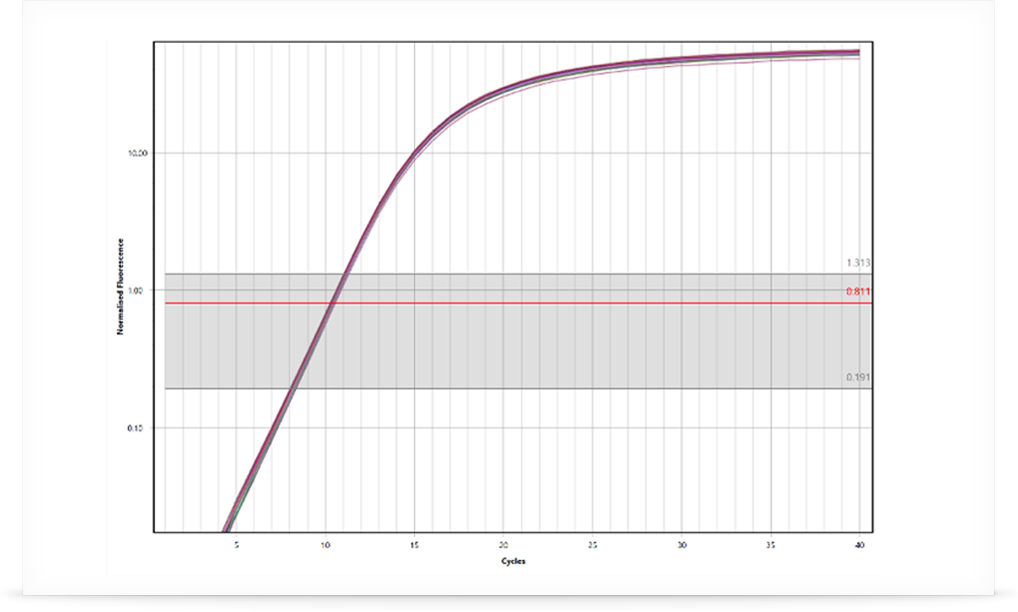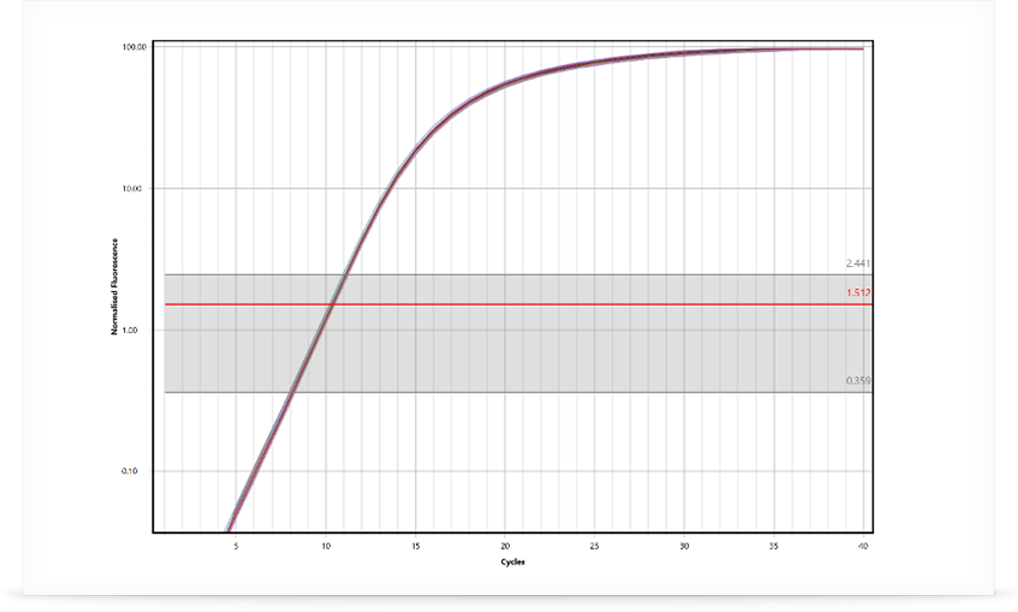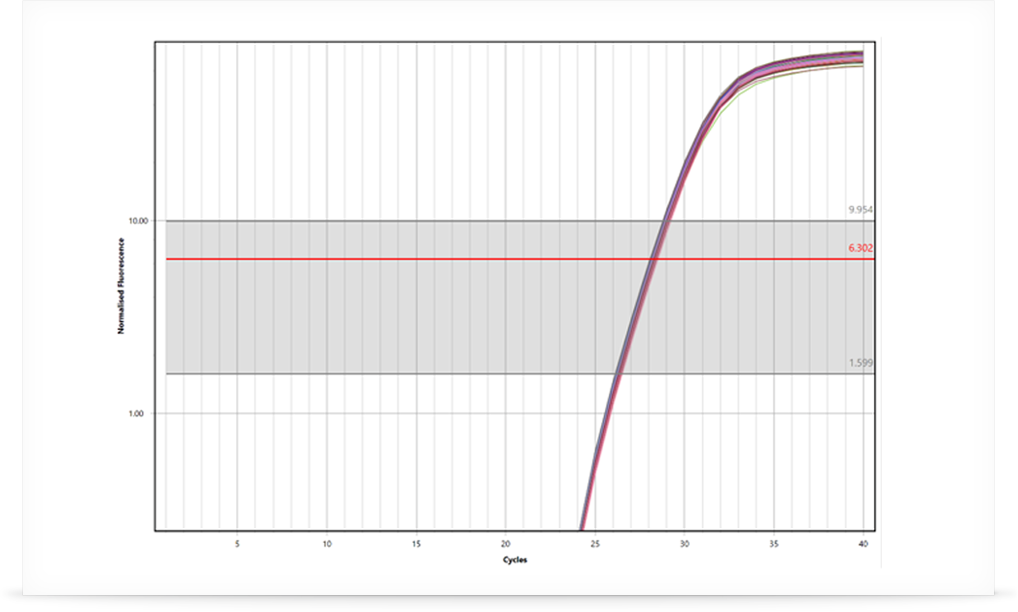Performance
Amazing results from a small package.

Quantitation
Confidently detect 2 fold differences in gene expression levels
Whether it’s using standard curves for Absolute Quantification or determining gene expression using Relative Quantification through REST, know that the performance you get from the Mic will always ensure the highest level of quantitative precision.
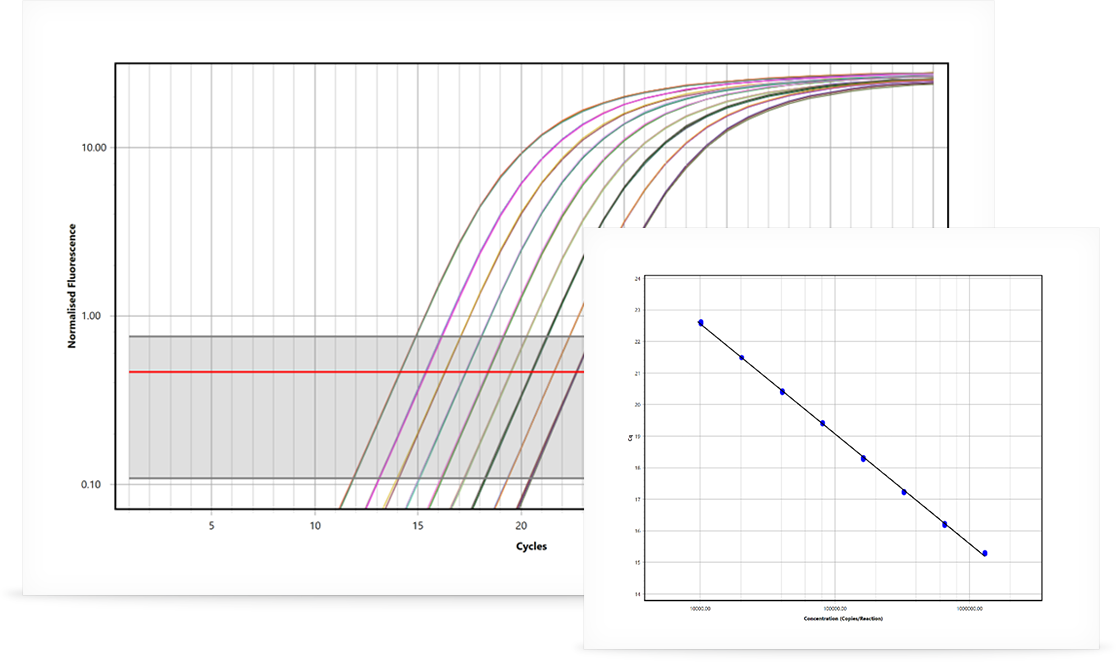
Extreme Quantitative Precision
Detect differences within one cycle
When you need to quantify small differences in relative gene expression, Mic will deliver the extreme levels of quantitative precision you need. Especially for bacterial genetics where minor differences in gene expression can multiply into big differences.
This data shows a 5 picogram dilution series clearly differentiated with 0.2 cycles between standards!
A Wide Linear Dynamic Range
Down to single digit copies of DNA
Have the power to detect high and low copy numbers of your target. Be it using Absolute Quantification to detect viral loads, or simply determining a PCR efficiency using your standard curve, Mic will deliver the dynamic range you need, accurately and precisely.

Amazing Repeatability
Ultra tight replicates every time
Be confident in the knowledge that each well is behaving identically to generate qPCR replicate data that is truly repeatable. Our focus on temperature uniformity means you can have confidence in your results whether its quantifying gene expression, determining genotypes, or measuring viral load.

Outstanding Reproducibility
Get the same result across multiple runs and instruments
We build our instruments to perfection so that each one is identical to the next. This means we can reproduce the same result not just across multi-runs, but instruments as well. Now you can combine multiple runs with minimal concern for variation. Inter-run calibrators become more of a quality control measure than a correction tool. And using sophisticated analysis software incorporating intelligent methods such as LinRegPCR, means we can further improve the qPCR reproducibility by minimising human error through analytical automation.
| Mic 084 Copy number %CV | Mic 002 Copy number %CV | Mic 146 Copy number %CV | |
|---|---|---|---|
| Experiment 1 | 5.13E+06 2% | 5.29E+06 3% | 5.10E+06 3% |
| Experiment 2 | 5.10E+06 2% | 5.21E+06 2% | 4.96E+06 3% |
| Experiment 3 | 4.96E+06 3% | 5.06E+06 2% | 4.89E+06 3% |
| Combined Runs | 5.06E+06 3% | 5.19E+06 3% | 4.98E+06 3% |
| Overall | 5.08E+06 3% |
Reproducibility At Low Copy Number
Duplicate runs easily on different instruments
Mic’s reproducibility even extends to very low copy numbers. Critical in applications such as Relative Quantification, Absolute Quantification and Copy Number Variants (CNV).
| Copy number %CV | Copy number %CV | |
|---|---|---|
| Experiment 1 | 199 copies 6% | 202 copies 6% |
| Experiment 2 | 201 copies 5% | 199 copies 5% |
| Experiment 3 | 198 copies 5% | 199 copies 6% |
| Combined Runs | 199 copies 6% | 200 copies 6% |
| Overall | 200 copies 6% |
First class temperature uniformity
Temperature uniformity unlike anything else
When it’s critical to distinguish small differences in Tm or Cq, temperature uniformity is at the top of your list. Mic’s superior temperature uniformity of ±0.05°C at zero seconds means we have you covered for all your melt analysis genotyping and real time quantification needs.

Fast Cycling
Maintain assay performance even at speed
Get high quality data, fast!
Mic’s speed is on par with the fastest instruments on the market. But unlike the competition Mic’s superior temperature uniformity and accuracy means you don’t sacrifice on the quality of your qPCR. Completing runs in under 30 minutes is the new standard with Mic, not the exception.
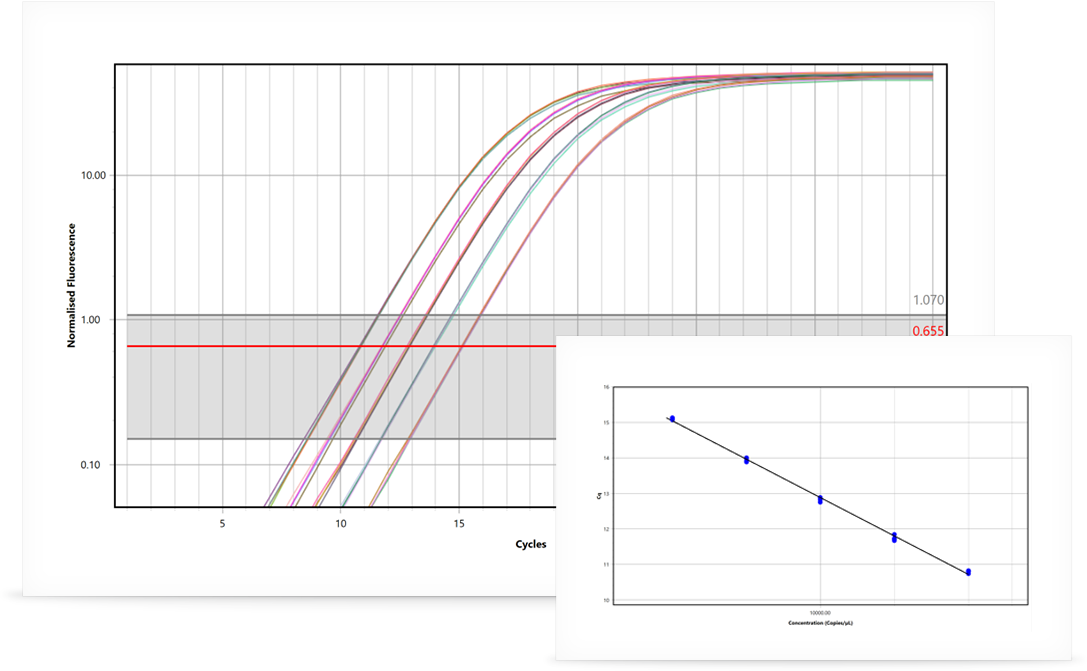
High Resolution Melting (optional)
Classify difficult Class IV SNPs
Genotyping for single nucleotide polymorphisms (SNPs) or insertion-deletions (InDel), quantifying somatic mutations or epigenetic methylation levels, sequence matching for drug resistant bacteria, or gene scanning for new mutations, needs a tool like HRM. But not all HRM instruments are the same. Mic’s first class temperature uniformity means you can do these things with confidence no matter what HRM saturating dye you choose (SYTO® 9, EvaGreen®, LC® Green).
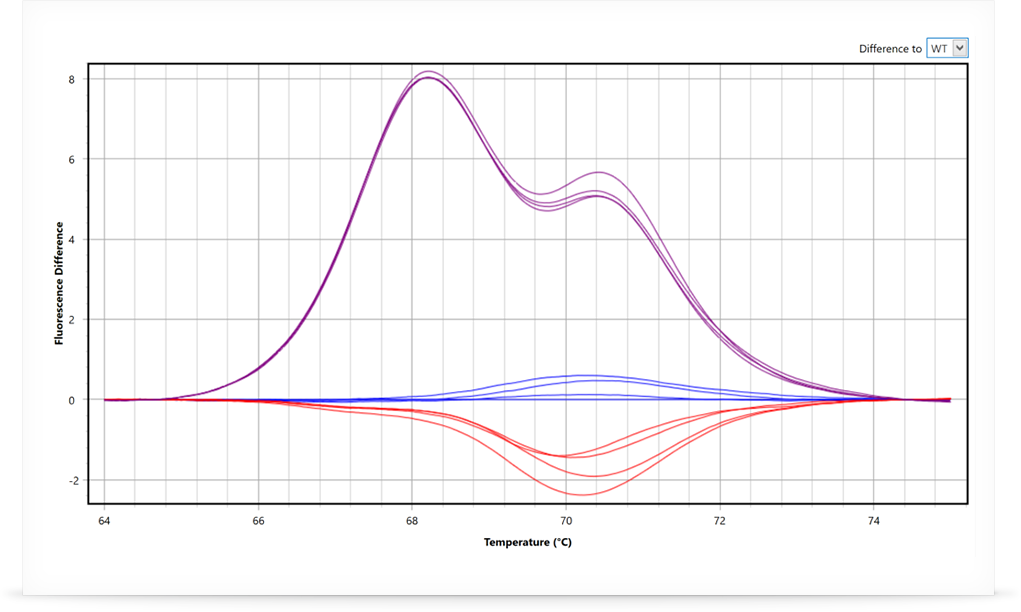
Four Colours
Lowest possible cross talk
If it’s molecular diagnostic (MDx) detection of pathogens, or genotyping using Allelic Discrimination, Mic has highly optimized filter sets to minimize your dye cross talk when multiplexing your real time PCR. With dedicated high powered LED and detectors per channel, detect all four colours in 1 sec during acquisition.
No dye colour compensation or dye calibration needed – ever!
